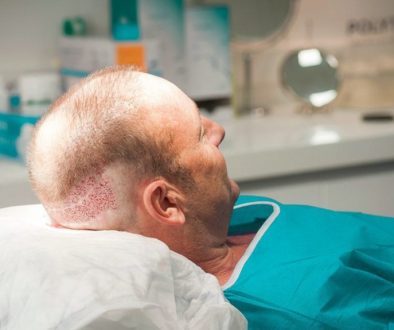Shock Loss After a Hair Transplant
This insightful article was written by forum discussion member “Spex” who is also a showcase for Dr. Feller of Great Neck, NY.
Shockloss
Shockloss after a hair transplant is something that can be experienced when transplanting into existing hair and is highly unpredictable. Shockloss occurs when the native hair is weak and isn’t strong enough to resist the surgical trauma thats going on around it. More often than not the hair that has gone into shock will grow back but after 3/4 months – after the [resting phase. To learn more about the hair growth cycle, click here.
Hair that goes into “shock” and doesn’t return is hair that was inevitably on its way out anyway due to male pattern baldness or female pattern baldness and wasn’t strong enough to return. Increased trauma to a localised area will increase the chances of shockloss.
There are risk factors that either heighten or lessen someone’s risk. Diffuse thinners seem more prone to shockloss than receders because the hair in a diffuse area is often less stable than that of a receder. Very often, a lot of the hair in a diffuse area is “on its last legs” and in the latter stages of the hair miniaturization process.
NOTE: Be aware that everyone is different! We ALL heal and grow at different time scales.
Be very patient and take pictures to enable you to see the results a little clearer. The realisation of the results will be hard for you to actually see as is so gradual.
Pictures at 6-8-10-12-14 months are important to give you the visual realisation of the developments occuring to keep you in a positive frame of mind!
—
Bill
Associate Publisher of the Hair Transplant Network and the Hair Loss Learning Center
View my Hair Loss Weblog
Technorati Tags: Shockloss, hair transplant, hair growth cycle, male pattern baldness, female pattern baldness, Diffuse thinners, hair miniaturization



